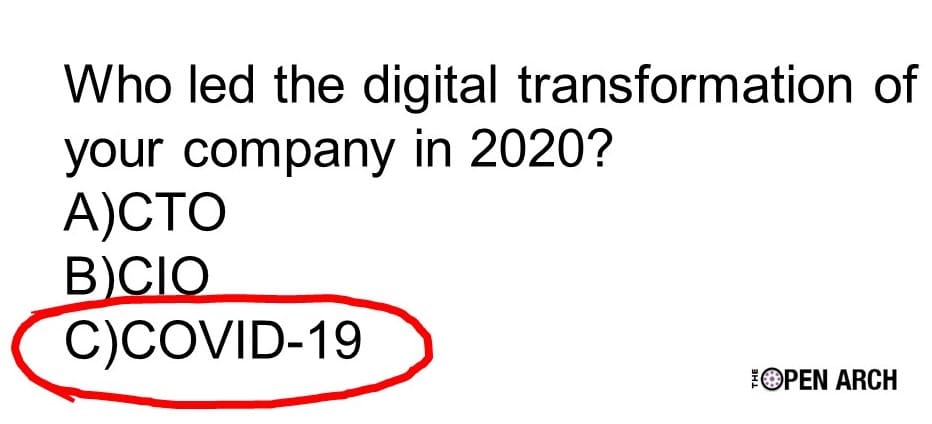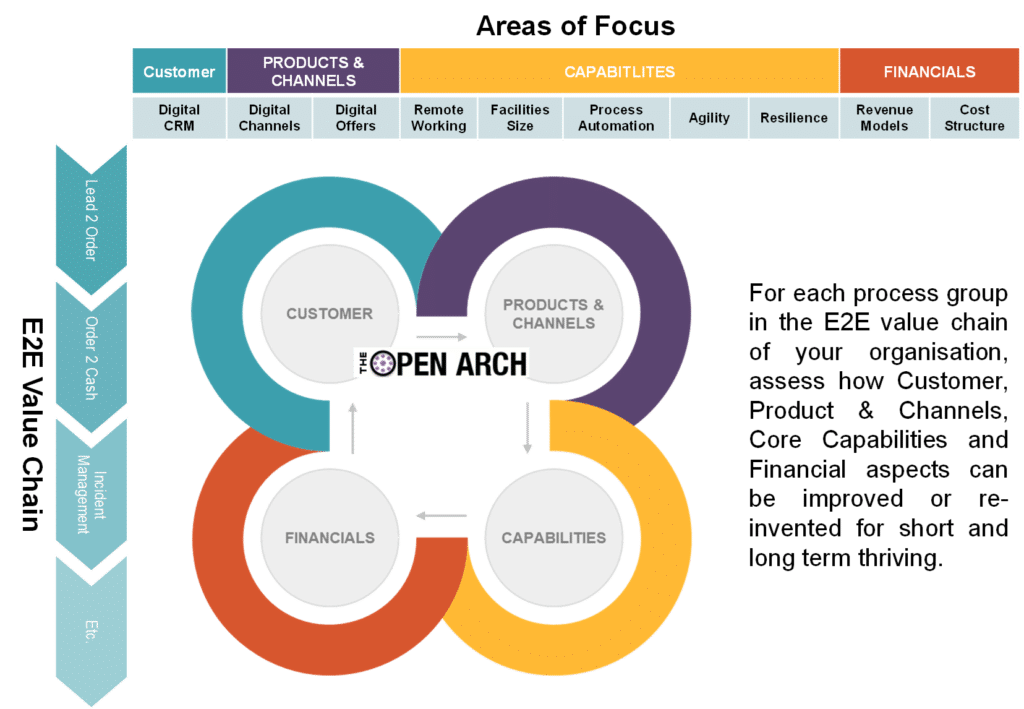Digital Transformation as a Response to the "Great Lockdown":

“Over the last few months, we’ve seen years-long digital transformation roadmaps compressed into days and weeks in order to adapt to the new normal as a result of Covid-19. Our customers in nearly every industry have had to identify new ways to communicate with their customers and stakeholders – from patients, to students, to shoppers, and even employees – essentially overnight,”
― Glenn Weinstein, Chief Customer Officer at Twilio.
Intro
After the Pandemic struck, the world reliance on digital solutions has increased dramatically. Many businesses that were relying mostly on offline channels and manual labour were brought to a halt. Businesses that were already digitally-enabled saw a dramatic increase in volumes, making some Telecom and Retail organisations live “every day just like Christmas day”.
From Growth to Strength
The Pre-pandemic digital transformation strategy was mostly focused on cost-optimization, increasing productivity or gaining a competitive edge. However, the effect of the Covid-19 pandemic has refocused minds towards maintaining essential services and supply chains, enhancing resilience, reducing human reliance with an increase in process automation, and also the development of new business sectors. Organisations see digital transformation as an effective response to this crisis.
Respond, don’t react
The first step in responding to a crisis should be to look at people. Organisation leaders should communicate with employees and ensure their well-being.
The focus should then be the planning of protecting your business. To do so, the executive team should analyse each process group in the end-to-end value chain of the organisation, assess how Customer, Product & Channels, Core Capabilities and Financial aspects can be digitally improved or re-invented for short and long-term thriving.
The Great Lockdown Response Plan

Focus on your customers
While the organisation is undertaking substantial change internally, externally it should be perceived as operating “business as usual”. Now that customer touchpoints are shifting towards a fully digital experience, a 360° view of the customer is even more important in order to offer quality self-served capabilities that promote automation and upsell through insight-based next-best actions.
Review your Products and Channels
The presence of digital-enabled channels is making the difference between thriving and failing businesses. Each customer touchpoint should be part of a well-integrated multi-channel experience that includes, eCommerce, Mobile, IVR, WebChat, and Customer support. To reduce the stress on the customer service layer, using robotics and AI as first customer support touchpoint should be considered. Review your products set and replace offline products with a digital offering.
Capabilities
Each step in the organisation end to end value chain has to be assessed to measure the maturity of:
- Remote Working: make sure to have a fully integrated suite of tools that will boost your employee’s efficiency when working from home. Video conferencing alone is not enough; organisations need a common set of tools and processes in order to standardise how they collaborate from a distance (e.g. Microsoft Office 365).
- Facilities Size: the use of space is changing; a large office space or retail shop is not as necessary as before, but smaller retail spaces or mobile stalls might be. This new approach to facilities management enables a more distributed presence in the area (given the limited customer’s mobility). Supply chain automation and analytics should also be used, to be sure capacity is not constrained in fulfilling demand.
- Process Automation: all processes in a digital offering should rely on automation whenever possible, thanks to RPA (Robotic Process Automation). When rearchitecting your processes, follow a lean-approach to minimise waste and enable fast pivoting. To quickly achieve a meaningful insight of your existing processes and to identify candidates for automation you can use Business Process Mining tools.
- Agility: while working on improving the agile maturity, the organisation’s agility can be quickly improved via partnerships and alliances with other organisations that operate in an agile way. Collaboration with partners replaces fixed costs with variable costs, in order to mitigate the current variable market conditions.
- Resilience: organisations should stress-test systems and processes in preparation for any further crisis. Refer to Frameworks for Resilient Cloud Solutions article to learn more on how to create a resilient solution.
Financials Aspects
It is important to find ways to reduce costs and increase revenues when enabling your organisation to the digital arena. The marketing strategy should promote (discount) online activities and discourage offline ones. Renegotiating a partner commercial agreement is another way to reduce costs, without impacting the customers’ experience.
Always remember that each business is unique and expert advice is required during these critical times. Our partner Bruhati are experts in Digital Transformation and can help you to define how to respond to this crisis.
For more information and a FREE consultation please visit www.bruhati.com or contact sales@bruhati.com.




